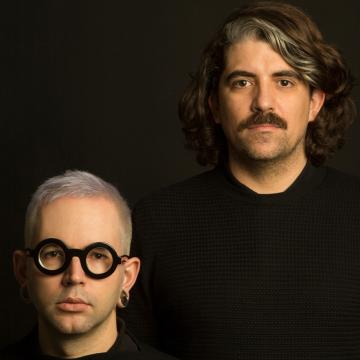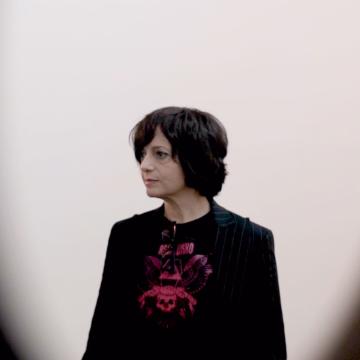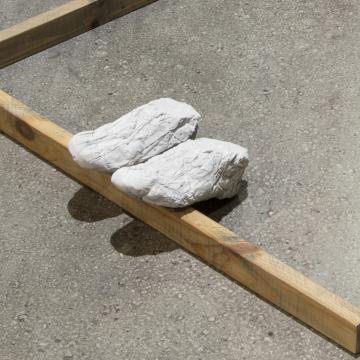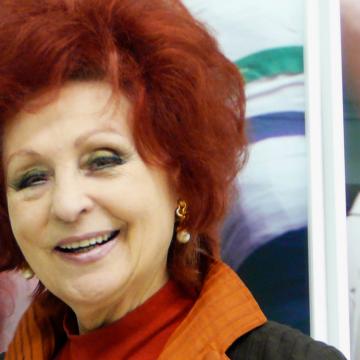Álvaro Gago, the director of ‘Matria’, chases Ramona with his camera in a frenzied story that has earnt actress María Vázquez her second Goya nomination.
Carlos Fernández-Pello
“With my work, I want others to tell me what I don’t know”
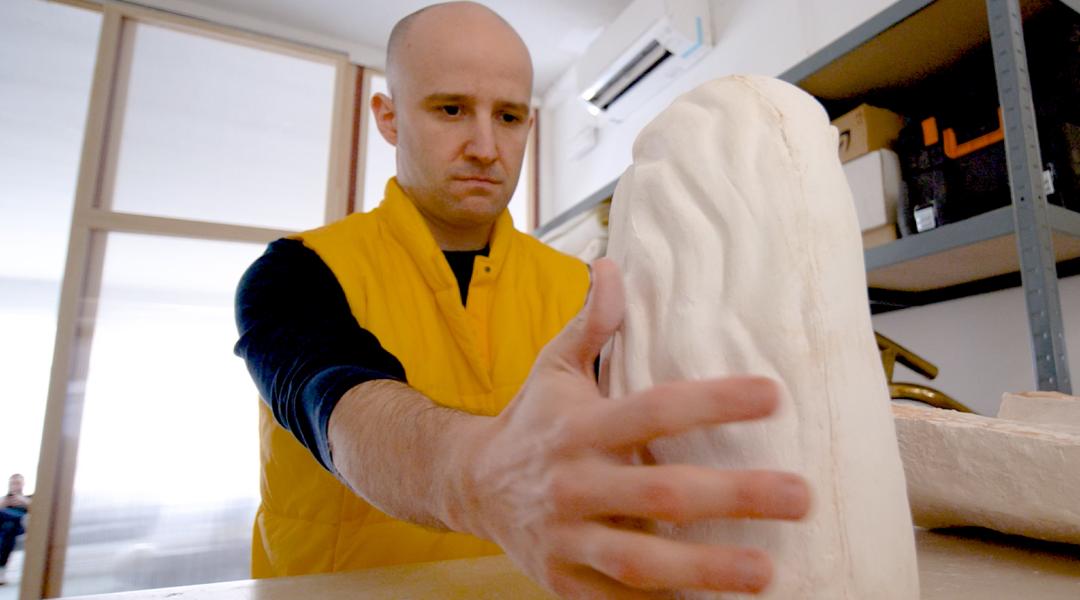
His work reached the masses through the cover of a C. Tagana album. Nevertheless, ‘hyperactive’ Carlos Fernández-Pello has been on Madrid’s artistic scene for years, both as an artist, teacher, editor and commissioner. We dive into his workspace to discover the practice of this millennial artist first-hand, who in just a few years has won over the art masters.
We meet up with Carlos Fernández-Pello (1985) one morning in a peripheral neighbourhood in Madrid, north of Carabanchel, where his home-studio is. He works and lives in a bright loft among foam sculptures, Marvel comics and art editions. He’s an artist, commissioner, Doctor in Fine Arts from UCM and one of the editors of NUDO, a magazine that unravels artistic practice and cultural technologies through formats such as essays, podcasts or opinion pieces.
Carlos is one of the artists at galería García, where five years ago he held his first individual exhibition in Madrid, titled “Retrospectiva” [Retrospective], that brought together a set of works that were ironic about the end of an artist’s career before it had even begun. His own gallery went beyond that and described it as “a maze that erases time and favours the invention of art history: reference myths, artist careers and institutional legitimacy”. Before this, this artist from Madrid had already exhibited at La Casa Encendida, Centro Cultural Conde Duque, and in cities such as Chicago, Rome, San Diego, Rotterdam or Berlin.
Through disciplines such as sculpture, video-art or design, Fernández-Pello delves into visual culture, aesthetics as a language and the narrative of images, bringing together, shape, material and concept with the experience of an outsider’s view. “I think that the audience must always interact 100% with the work, but I don’t expect them to 100% understand what I think. With my work, I aim to create an object, an experience or a film well, with thousands of access points and interpretations that are beyond me”, he explains. “Art is not a journalistic or informative message, that’s why I want others to tell me what I don’t know, what I can’t see”, he continues.
“With my work, I aim to create an object, an experience or a film well, with thousands of access points and interpretations that are beyond me”
Therefore, his work starts with disconnected situations and sometimes antagonistic concepts that find a single line of work in his head, before becoming an object, a tangible idea that has as many interpretations as people looking at it. “The first thing I do when I find a detail is to open a parallel route that has nothing to do with it: I watch a film, read a book, do things mechanically without knowing why... And I start to develop two, three or four parallel routes that, initially, have nothing to do with each other, but that with time I start to see how they fit in together”, he explains.
YouTube, haters and art as a vital experience
Paradoxically, his most well-known piece is not on the walls of a museum or in the warehouse of a gallery, but on the cover of an album, Ídolo, by C. Tangana. A marble cat with an amorphous mass as a head sparked the interest of many listeners for the person behind the cover art of the debut of “Mala Mujer”. While the rapper mulled over the title for his album, Pello was digressing about soft and abstract shapes and worshiping shapelessness in our times. A mutual friend put them in touch and, immediately, there was a spark between them. “It was an interesting experience that allowed me to exhibit my work on a medium such as YouTube”, he explains. “People don’t beat about the bush on there. Some people loved my work and others thought it was lame. I thought it was an incredible experience, because as an artist I look for dialogue. We don’t all have to agree”, he continues.
Nevertheless, and even though his work has permeated the specialised circuit in recent years, Fernández-Pello prefers to not make too much of a fuss. Art, in his case, is not a need or a profession, but a means like any other of facing the world, whether from an institution such as a museum or a fair, or from the private space of his studio. “Art is something natural to me. I don’t do it consciously like going out or a hobby, or feel like it’s something that I can separate from what is normal or usual for me. Not everything that happens to me, that arises or that worries me becomes art. Sometimes, I simply live those experiences and turn them into other things, such as going on holiday or dancing”, he says, and adds: “My process isn’t always the same. It’s like the category of artist: it’s everchanging, critical, self-critical and under constant review”.
